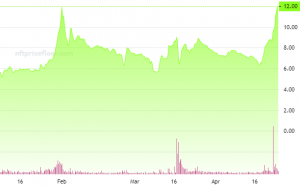— August 3, 2018
People analytics is a hot topic in the HR industry today. In fact, a recent study of over 10,000 businesses revealed that over 70 percent of these companies consider the use of people analytics to be a major priority. Unfortunately, despite this high number of employers who realize the importance of using analytics in HR, very few know how to maximize its full potential, especially when it comes to aiding in the talent acquisition process.
What is People Analytics?
People analytics, sometimes referred to as talent analytics, is the process of analyzing valuable employee and/or candidate data in order to make data-driven HR decisions. HR analytics serves three primary purposes — measure the effectiveness of HR processes, evaluate current workforce performance and to recruit top talent. When used correctly, people analytics is extremely effective at tracking and predicting future performance of both current employees and prospective candidates.
Tips for Using Analytics in the Talent Acquisition Process
There are several things HR teams should keep in mind when integrating people analytics into the talent acquisition process.
Know What Type of Data You’re Collecting
The passage of the GDPR privacy rules in the EU is forcing employers around the globe to revisit their employee and candidate data collection processes. Use this time to review the type of data you are collecting, especially data that pertains to talent acquisition. This could include demographic data, such as type of degree, location and years of employment; previous performance data, such as performance reviews and customer service rankings; and pre-hire assessment data, such as simulation and personality assessment results.
Remember that it’s not necessarily about the quantity of data you collect, but the quality, and in this case, how you use the data that is important.
You also don’t want to sell yourself short by not collecting enough data. It’s vital that you look closely at the type of data you collect and make sure you are only collecting candidate data that will enable you to make sound hiring decisions.
Develop a Data Management Process
Collecting candidate data can easily get out of hand if you do not have a data management plan in place. Develop a process for collecting, storing, managing and securing candidate data. You may need to bring your IT team in to help develop a data management process that works best for your company, yet still protects the security of your applicants’ data. HR platforms, like ATS (Application Tracking Systems) software also can help manage HR data.

Define Your Question
One of the biggest challenges facing HR departments is knowing where to begin. It can be difficult to find efficient ways to sort through large amounts of data. The best way to begin is to start by defining your question — what answers are you hoping people analytics to provide. Are you looking to diversify your workforce? Are you looking to isolate the root cause of attrition? Do you want to focus on applicants with specific soft skills, such as communication, empathy, leadership or adaptability? Do you want to identify candidates with specific skill sets, such as data entry accuracy or computer literacy?
Determine Solutions
Once you have defined your question and know what type of results you are looking for, you can start the process of building solutions. Find ways to utilize your people analytics to extract the data you need. For example, if you are looking for candidates with specific soft skills, such as decision making, you can use data from pre-hire assessment to identify ideal candidates.
With people analytics in place, you can stop weighing so heavily on resumes and start hiring candidates that are not only qualified, but that also are ideal for your specific company. Data-driven results won’t happen overnight. Instead, it vital to put a people analytics plan in place, measure the results regularly and make adjustments to your analysis processes when necessary. Learn more about how to integrate people analytics into your talent acquisition processes by contacting FurstPerson today.
Business & Finance Articles on Business 2 Community
(127)
Report Post




